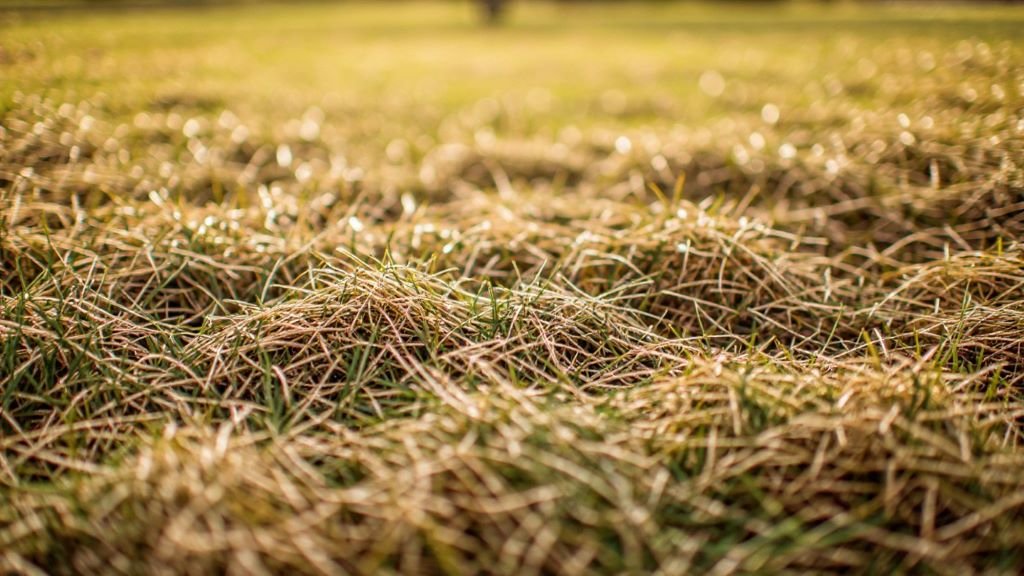Winter can be harsh on your lawn. When spring arrives, many homeowners discover their once-lush grass has become matted, flattened, and lifeless. The good news is that recovering your lawn from winter damage is entirely possible with the right approach. According to Boyers Lawn Care, understanding the causes of matted grass and taking prompt action can help restore your yard to its former glory.
Matted grass occurs when snow, ice, and moisture compress grass blades for extended periods. This compression prevents air circulation and sunlight from reaching the grass roots. Additionally, snow mold, excessive thawing and freezing cycles, and heavy foot traffic during winter months contribute to the problem. The result is a lawn that looks dead or severely damaged when the snow finally melts.
However, most matted grass is not actually dead. The grass is simply dormant and compressed. Therefore, with proper care and attention, your lawn can bounce back quickly. Addressing issues like bare spots on lawn repair early in the season prevents more serious problems later. Taking immediate steps to revive your grass ensures a healthy, green lawn throughout the growing season.
Understanding Winter Lawn Damage
Winter weather creates multiple challenges for grass health. Heavy snow cover blocks sunlight and traps moisture against the soil surface. This environment encourages fungal diseases like snow mold, which appears as circular patches of pink or gray matted grass. Furthermore, freeze-thaw cycles cause soil heaving, which can damage grass roots and create uneven surfaces.
Matted grass also results from accumulated dead grass blades, leaves, and debris that became trapped under snow. This organic matter forms a dense layer called thatch when it doesn’t decompose properly. Excessive thatch prevents water, nutrients, and oxygen from reaching the soil. Consequently, grass growth becomes stunted and weak.
Assessing Your Lawn’s Condition
Before starting any repair work, evaluate the extent of winter damage. Walk across your entire lawn and identify problem areas. Look for sections where grass appears completely flattened or discolored. Check for bare patches where grass has died completely. Additionally, inspect for signs of disease, such as slimy or crusty patches that indicate snow mold.
Use a garden rake to gently lift matted grass in small sections. If the grass springs back and shows green at the base, it is still alive and will likely recover. However, if the grass pulls up easily with no resistance or shows no green color, those areas may need reseeding or other intervention.
Essential Steps to Revive Matted Grass
Remove Debris and Thatch
The first step in lawn recovery involves removing all winter debris. Rake up leaves, twigs, and any accumulated organic matter. Use a leaf rake or a dethatching rake to gently lift matted grass blades. Work in different directions to ensure thorough coverage. This process allows air and sunlight to reach the grass crowns and promotes new growth.
Be careful not to rake too aggressively, as this can damage healthy grass. The goal is to lift and separate the blades without tearing them from the soil. Additionally, remove any remaining snow mold or diseased grass to prevent the spread of fungal problems.
Aerate Your Lawn
Aeration is crucial for recovering from winter compaction. Use a core aerator to remove small plugs of soil throughout your lawn. This process creates channels for air, water, and nutrients to penetrate the soil. Aeration also relieves soil compaction caused by heavy snow and ice.
The best time to aerate is when the soil is slightly moist but not saturated. According to The Old Farmer’s Almanac, spring aeration helps cool-season grasses recover quickly from winter stress. Focus extra attention on high-traffic areas and spots where matting is most severe.
Overseed Thin Areas
After aerating, overseed any thin or bare patches. Choose a grass seed variety that matches your existing lawn. Spread seed evenly using a broadcast spreader, applying at the rate recommended on the package. The seed will settle into the aeration holes and establish more easily.
Keep newly seeded areas consistently moist until germination occurs. Water lightly several times per day rather than applying large amounts at once. This approach prevents seed from washing away while ensuring adequate moisture for sprouting.
Apply Fertilizer
Feed your recovering lawn with a balanced spring fertilizer. Look for products with higher nitrogen content to promote leaf growth and green color. Apply fertilizer according to package directions, being careful not to over-apply. Excessive fertilizer can burn grass and cause more damage.
Slow-release fertilizers work best for spring application because they provide nutrients gradually over several weeks. This steady supply supports consistent growth without overwhelming stressed grass.
Maintain Proper Watering
Consistent moisture is essential for grass recovery. Water deeply but infrequently to encourage deep root growth. Most lawns need about one inch of water per week, including rainfall. Use a rain gauge to monitor moisture levels accurately.
Water early in the morning to reduce disease risk. Evening watering leaves grass blades wet overnight, which creates ideal conditions for fungal growth. Additionally, avoid watering during the hottest part of the day when much of the water evaporates before reaching roots.

Addressing Bare Patches
Some areas may not recover naturally and require additional attention. For completely bare spots, remove any dead grass and loosen the soil surface. Add a thin layer of quality topsoil or compost to create a good growing medium. Then apply grass seed generously and cover lightly with straw or a thin layer of compost.
Keep these areas consistently moist until grass establishes. Avoid walking on newly seeded areas for at least three weeks. Once grass reaches mowing height, reduce watering frequency but increase the amount applied per session.
Ongoing Lawn Maintenance
Mowing Practices
Begin mowing when grass reaches about three inches tall. Set your mower blade high for the first few cuts to avoid stressing recovering grass. Remove no more than one-third of the grass blade length in a single mowing. Sharp mower blades make clean cuts that heal quickly and resist disease.
Weed Control
Weeds often invade weakened lawns in spring. However, avoid applying herbicides to newly seeded areas or stressed grass. Wait until grass has been mowed at least three times before applying weed control products. Hand-pulling weeds is safer for recovering lawns.
Disease Prevention
Monitor your lawn regularly for signs of disease. Brown patches, unusual discoloration, or continued matting may indicate fungal problems. Improve air circulation by trimming overhanging branches. Ensure proper drainage to prevent standing water, which encourages disease development.
Preventing Future Winter Damage
Preparation in fall makes spring recovery much easier. Rake leaves promptly to prevent matting. Continue mowing until grass stops growing. Apply a winterizing fertilizer in late fall to strengthen roots. Additionally, avoid excessive foot traffic on frozen or snow-covered grass.
Conclusion
Fixing matted grass after winter requires patience and consistent care. Start by removing debris and aerating to relieve compaction. Overseed thin areas and apply appropriate fertilizer to support recovery. Maintain proper watering and mowing practices throughout spring. Most lawns respond well to these treatments and achieve full recovery within several weeks. Taking preventive measures in fall reduces winter damage and makes spring lawn care easier. With dedication and proper technique, your lawn will transform from matted and lifeless to lush and vibrant.
Frequently Asked Questions
How long does it take for matted grass to recover after winter?
Most matted grass recovers within three to six weeks with proper care. The timeline depends on grass type, severity of damage, and weather conditions. Cool-season grasses typically bounce back faster in spring temperatures. Consistent watering, fertilization, and aeration accelerate the recovery process significantly.
Can I walk on matted grass while it’s recovering?
Minimize foot traffic on recovering grass as much as possible. Walking on matted or weak grass causes additional stress and delays recovery. Create temporary pathways using stepping stones or boards if you must cross damaged areas. Wait until grass shows strong new growth before resuming normal use.
Should I use a power rake or hand rake on matted grass?
Start with a hand rake for gentle dethatching on matted grass. Power rakes are aggressive and can damage weakened grass further. Use power rakes only on established, healthy lawns or in areas where grass is completely dead and needs removal. The gentler approach preserves living grass while removing debris.
Is matted grass dead or just dormant?
Most matted grass is dormant rather than dead. Check by gently pulling on grass blades or using a rake to lift the matted areas. If you see green color at the base or roots remain firmly attached, the grass is alive. Dead grass pulls up easily with no resistance and shows no green coloring anywhere.
What’s the difference between matted grass and snow mold?
Matted grass is physically compressed and flattened but otherwise healthy. Snow mold is a fungal disease that creates circular patches of matted grass with pink, gray, or white fungal growth. Snow mold often has a slimy texture when wet or a crusty appearance when dry. Matted grass without disease simply looks pressed down and will lift up when raked.
Related Topics:
How to Care for Pink Lady Plant: 7 Simple Tips for a Thriving Beauty









